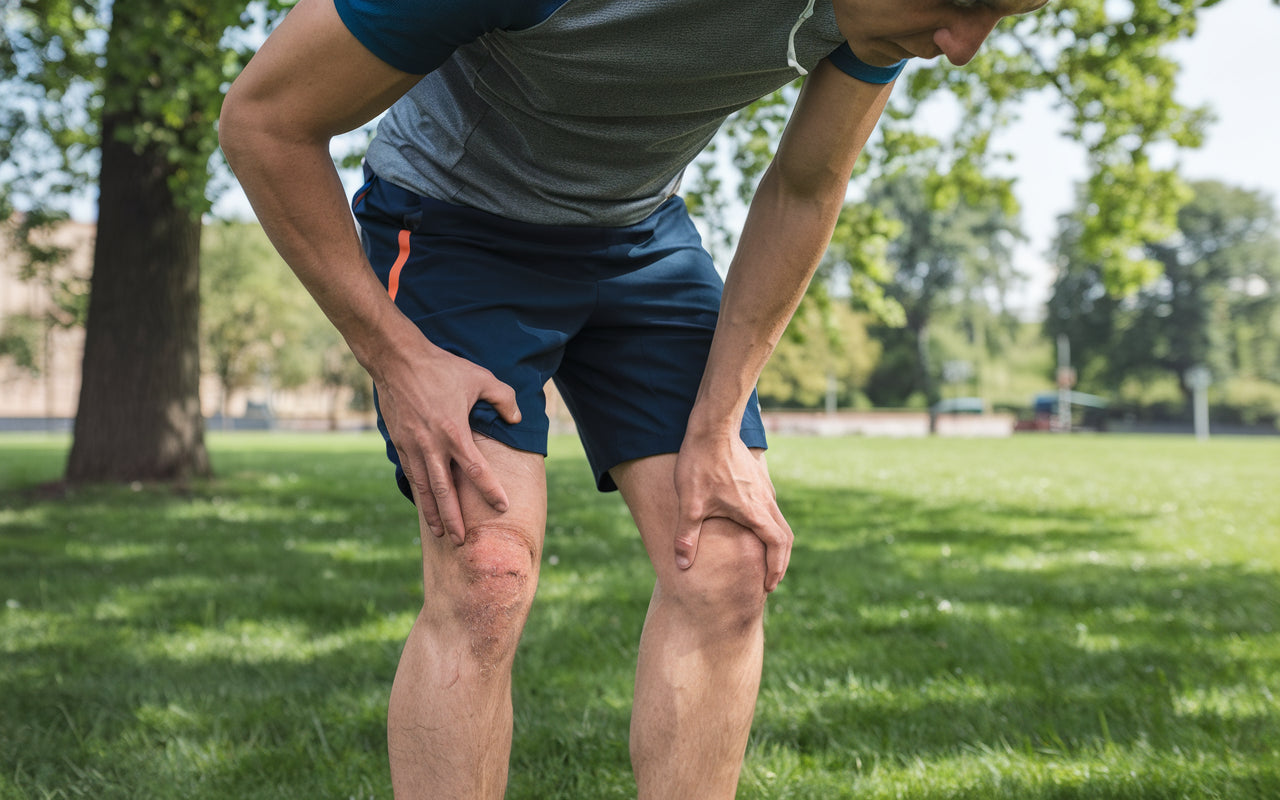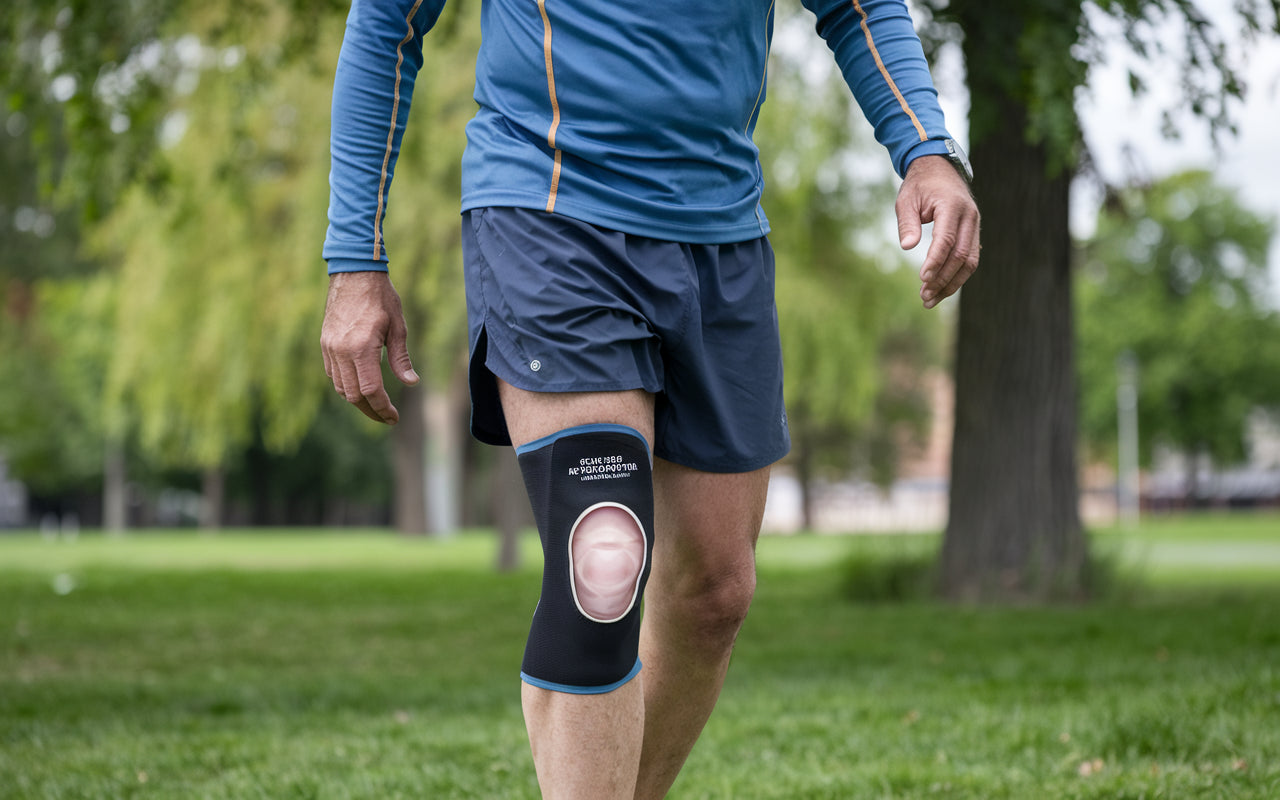Schlatter's Disease: Causes, Symptoms, and Treatment

Schlatter's knee, also known as Morbus Schlatter, is a common knee problem that affects children and adolescents between the ages of 8 and 15. This condition causes pain and swelling in the knee, especially in active young people who participate in sports that involve a lot of running and jumping. Schlatter's knee is sometimes also called growing pains in the knees due to overuse. In this article, we will review the causes of Schlatter's knee, its symptoms, and effective treatment methods.
What is Schlatter's knee?
Schlatter's knee occurs when the thigh muscle and its tendon attachment, which sits on a bump a few centimeters below the kneecap (tibial tuberosity), become inflamed and swollen. This often happens during periods of rapid growth, when skeletal development does not always keep up with the strain on the muscles and tendons. The area at the front of the knee swells and can become very tender, especially when the child climbs stairs or tries to play sports.
Causes of Schlatter's knee
The development of Schlatter's knee can be attributed to several factors. The primary cause is often the rapid growth spurt during puberty, where the skeleton grows faster than the muscles and tendons can adapt. This can lead to increased tension in the patellar tendon.
Overuse through intense exercise or sports is another common cause of the injury. Certain activities that involve a lot of jumping and running, such as volleyball and gymnastics, increase the risk of developing Schlatter's knee in children.
Muscle imbalances, where tight or weak muscles in the thighs and calves increase the strain on the patellar tendon, may also play a role. Additionally, some children may be more prone to developing the condition due to genetic factors or their body build.
When the tendon is subjected to continuous strain, the attachment at the top of the lower leg can become irritated and inflamed, leading to the discomfort. You can also read about knee overuse .
Symptoms of Schlatter knee
The symptoms of Schlatter knee can vary in intensity but usually include:
- Pain and tenderness on the front of the knees, just below the kneecap
- Swelling and thickening of the lump under the kneecap (Schlatter's nodule)
- Increased pain with physical activity, especially running and jumping
- Knee stiffness after inactivity
- Pain when pressure is applied to the affected area
- Visible swelling or lump on the front of the knee
- Especially painful when the child walks up stairs or squats
It is important to note that Schlatter's knee is a harmless condition, although it can be very painful for the sufferer. Also read about knee problems caused by overuse .
Diagnosis and examination
If a child experiences persistent knee pain, it is important to seek medical attention for a proper diagnosis. The doctor will usually perform a physical examination of the knee and ask about the child's medical history and activity level. In some cases, X-rays or ultrasounds may be ordered to rule out other knee problems, although these are usually not necessary to diagnose Schlatter's knee. You can also read about meniscus injuries, which can cause similar symptoms, here.
Schlatter's knee is a self-healing condition that usually resolves when the child stops growing. Treatment therefore focuses on relieving symptoms and preventing worsening. A combination of rest, activity modification, and physical therapy is often effective.
Rest and activity modification
To relieve the discomfort, the child should reduce or pause activities that aggravate the pain. This does not necessarily mean complete inactivity, but rather avoiding activities that cause pain and instead choosing gentler alternatives that put less strain on the knees.
Physiotherapy
Physiotherapy may include strengthening exercises for the thigh muscle and stretching to reduce tension in the patellar tendon. This helps to relieve the inflamed area. See also our tips on knee inflammation .
Cooling treatment
Applying ice to the affected area after activity can help reduce inflammation and pain. Learn more about swollen knees and how to relieve them.
Taping
For some children, taping the knee can be an effective method of relieving and supporting the affected area. Taping the knee can help reduce the strain on the tendon and thus reduce pain. You can read about knee instability here.
Knee pads for Schlatter
A specially designed Schlatter knee brace can provide significant relief and support. An effective alternative is the Schlatter knee brace from Komforten. This Schlatter brace offers several benefits:
Property Description
Compression support Improves mobility in the knee joint, thigh, hip and ITB syndrome
Pain relief Stabilizes the patellar tendon for effective pain relief
Design Ultra lightweight and discreet for everyday use
Fit Adjustable for different body types
Compression Targeted to relieve pain and inflammation
The knee brace is specifically designed to relieve pain from Schlatter's disease and jumper's knee. It stabilizes the patella and kneecap, improves mobility and reduces discomfort. With its secure fit, this Schlatter knee brace is an excellent choice for protecting the knee during various activities and sports.
Shockwave therapy
In some cases, shockwave therapy may be recommended to speed up the healing process, especially if traditional treatment methods do not provide sufficient relief.
Preventive measures
To reduce the risk of Schlatter knee or prevent recurrence, it is important to:
- A gradual increase in exercise intensity
- Regular stretching and strength training
- Use of shock-absorbing shoes
- A balanced diet rich in calcium and vitamin D for bone health
- Sufficient rest between workouts
Conclusion
Schlatter's knee can be painful and frustrating for active children and adolescents, but with the right treatment and patience, it usually goes away. By combining rest, physical therapy, and supportive devices such as Schlatter's knee braces, most young people can return to their activities with minimal disruption.
Remember that each case is unique, and it is important to follow the advice of a healthcare professional. With the right care and support, most children and adolescents can manage Schlatter's knee effectively and continue to enjoy an active lifestyle once the symptoms have subsided.
Frequently Asked Questions (FAQ)
Can my child continue playing sports if they have Schlatter's knee?
In most cases, children with Schlatter's knee can continue playing sports, but this may require adjustments. It is important to listen to your body's signals and reduce the intensity or frequency of activities that cause pain. Alternative forms of exercise such as swimming or cycling may be helpful during the recovery period. Always consult a doctor or physical therapist for individual recommendations.
How long does Schlatter's knee usually last?
The duration of Schlatter's knee varies from person to person, but it can often last for 12-18 months. In some cases, symptoms can persist for up to 2 years. The condition usually resolves on its own when the child stops growing and the growth plate closes. With proper treatment and management, symptoms can often be relieved significantly sooner.
How long should my child wear Schlatter Knee Pads?
The duration of use of the Schlatter Knee Brace may vary depending on the severity of Schlatter Knee and individual needs. It is generally recommended to use the brace during activities that place stress on the knee and as needed throughout the day for support and pain relief. For best results, it should be used consistently during the active phase of the condition. Consult a doctor or physical therapist for personalized recommendations based on your child's specific condition and progress.


